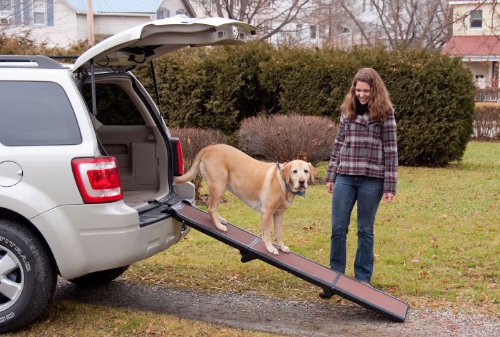
You might treat your dog like part of the family, but sometimes you can’t bring it everywhere with you. For example, you don’t think twice about leaving it at home or in the car while you’re grocery shopping. But when it comes to leaving your pet behind while you go on vacation, it becomes a more difficult decision. There are a variety of reasons that people choose not to take their dogs with them on vacation. Sometimes it is simply impossible; perhaps you are going on a cruise that doesn’t allow pets or are entering a country that has a long quarantine period. Quarantine is something that some countries require for animals entering the country. Pets have to stay isolated for a few days to weeks in order to ensure that they do not have any diseases.
Other times, it is simply too stressful to bring your dog on vacation. Maybe you have a nervous dog that would not be able to handle being in a strange place or perhaps the seven hour flight to Europe would be way too long. On the other hand, sometimes travelling with your dog would be too stressful for you. Your dog might limit you from doing certain things or going to certain places while you are on vacation. So you decide that you will take your vacation without your dog.
You may feel guilty, nervous, or concerned, especially if this is the first time you have left your dog for more than a day. How will it react? Will your pet think that you abandoned it? Will it hate you when you come back from your vacation? Will it go crazy and refuse to eat and bark non-stop the whole time you’re gone? When you got a dog, you agreed to take on a responsibility to care for and love this animal. So it is perfectly natural to feel guilty about leaving it behind for a few days or weeks. This concern just shows that you take your responsibility for your pet’s happiness seriously. With proper preparation, you can make this a good experience for both you and your pet.
First of all, what are your options? The most obvious option is a kennel. Kennels are places where people specialize in looking after pets. Many animals are kept in the same place at the same time. Most often, animals are kept in their own cages and receive supervision for the whole day. They are let out of their cages for playtime and walks. If you are thinking about taking your dog to a kennel, make sure you visit the facilities first. There are a big variety of kennels available. You should always look at the size of the cage, the area where the dogs are walked, and ask about the walking and playtime schedule. Your next option is boarding your pet at your veterinary clinic. This is a very similar situation to a kennel. Not all clinics offer boarding, but if they do you should make sure you ask all of the same questions that you would ask a kennel.
The third option is to find a pet-sitter. This is someone who either brings your dog to their house or stays at your house with your dog while you are on vacation. The pet-sitter can be a neighbour, friend, or someone who pet-sits as a job. Very often your pet-sitter will have a day job, but will still be around to spend the rest of the day with your pet. This is sometimes a more expensive option, but you would be surprised that very often pet-sitters are not much more expensive than a kennel or your veterinary clinic.
So which option should you chose? It depends on what the facility requires, the comfort of your pet, and the security of you and your pet. The requirements for boarding at a kennel and a veterinary clinic are similar. Your pet will need to be up-to-date on its vaccinations. Boarding facilities often require that your pet receive its vaccinations at least two weeks ahead of time. Kennels and clinics also usually require a bordetella vaccination that is normally optional. Bordetella is one of the bacteria that can cause kennel cough. Kennel cough is more common in kennels and clinics because more dogs are put together in one place. There are also other requirements to consider. You need to provide food for all three options. Also, the price will vary between types of boarding. You will need to book all of them far in advance, especially during peak travelling seasons, such as Christmas and summer.
Where will your pet be the most comfortable? This will depend on its attitude. A very laid-back pet may be perfectly happy in a cage. It won’t get very stressed and will be satisfied chewing toys all day and romping around with a caretaker a few times during the day. These dogs have so much fun that they are often reluctant to leave when their owners come to pick them up. Other dogs are far happier with a pet-sitter at their own home. These dogs may be anxious and shy; they are the type of dog that would refuse to eat or interact with caretakers at a kennel or veterinary clinic. If placed in a cage, they would not have any serious medical or mental problems, but they would suffer from more stress than if they stayed at home.
You also need to take into consideration your own and your pet’s security. How comfortable are you with the person who will be pet-sitting? How well do you know them? Do you trust them in your house? Are you certain that they will take care of your dog the way you want them to? Also, if your dog has medical problems, you might feel more secure leaving it at a veterinary clinic. This would allow more monitoring of your dog, and medical care would be immediately available.
Wow, all of a sudden leaving your pet behind while you go on vacation has become a complicated decision. But now you know your options. There is no single best decision. You must first look at what options are available in your area, and get recommendations from other pet owners. Then you can decide what option will best suit your needs and your dog’s personality. Who knows, maybe while you are on vacation your pet will be having a vacation of its own!
 Interview With A Professional Dog Groomer
Interview With A Professional Dog Groomer
The Dog Gu
Interview With A Professional Dog Groomer
Interview With A Professional Dog Groomer
The Dog Gu
 Dog Ramps for the SUV
Pets are a big part of our f
Dog Ramps for the SUV
Pets are a big part of our f
 The Effects of Nicotine and Secondhand Smoke on Your Dogs
Credit: CDC (PHIL) - Public domain
The Effects of Nicotine and Secondhand Smoke on Your Dogs
Credit: CDC (PHIL) - Public domain
 Designer Dog: Jorkie
What is a Jorkie?A Jorkie is
Designer Dog: Jorkie
What is a Jorkie?A Jorkie is
 Starting Puppy Training
Credit: nnne
Starting Puppy Training
Credit: nnne
Copyright © 2005-2016 Pet Information All Rights Reserved
Contact us: www162date@outlook.com